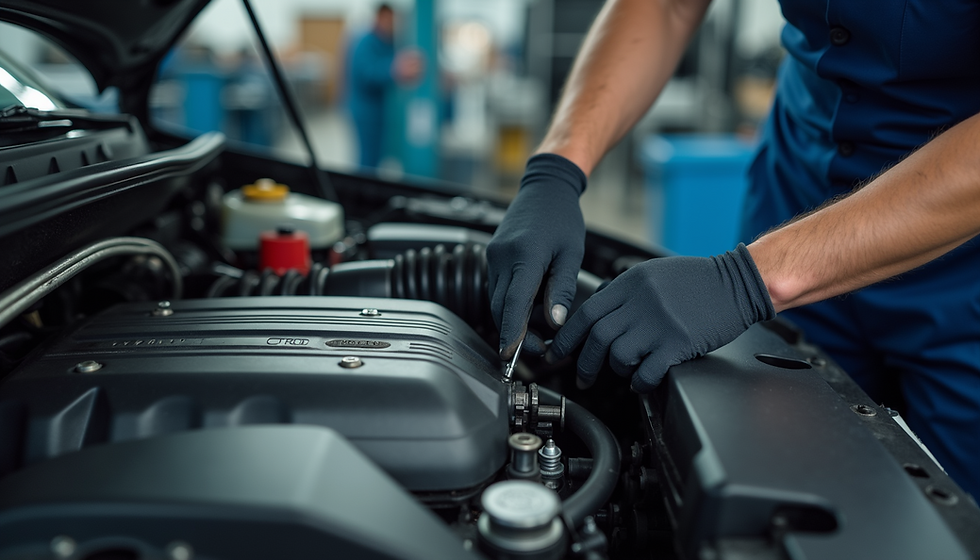The Decline of American Automakers: Quality Issues, Skyrocketing Prices, and Long-Term Car Loans
- Alan
- Sep 25
- 3 min read

The American automotive industry has long been a beacon of innovation and craftsmanship. However, recently, companies such as General Motors, Chrysler, and Ford have faced significant hurdles, leading to a decline in their reputation. This post dives into the root causes of this perceived decline in quality, the alarming rise in vehicle prices, and the growing trend of long-term car loans that many consumers now rely on.
The Quality Control Crisis
Quality control is one of the most urgent issues confronting American automakers. Once associated with durability and reliability, brands like Ford and General Motors are now grappling with quality problems. For instance, in 2021, Ford issued over 50 recalls, affecting nearly 5 million vehicles due to various defects. These range from minor cosmetic flaws to serious safety concerns.
One major factor behind this decline is cost-cutting. Striving to remain competitive globally, automakers have outsourced production and reduced quality checks. A report from the automotive consultant firm J.D. Power revealed that the number of quality-related problems per 100 vehicles rose from 161 to 183 in the past five years. This increase not only harms the brands but also damages consumer trust.
Technology also plays a role in quality issues. As automakers rush to incorporate advanced features like driver-assistance systems, the focus on traditional quality control has weakened. For example, multiple drivers reported problems with the Ford Mustang's new infotainment system just months after its launch. Consumers end up frustrated when their vehicles hit the market with unresolved issues.
The Price Surge
Simultaneously, the cost of new vehicles has surged dramatically. The average price of a new car in the United States has now crossed $45,000, marking a nearly 30% increase over the last five years. Several key factors contribute to this price surge.
First, the rising cost of raw materials has significantly escalated production costs. For instance, steel prices jumped by over 200% in 2021, putting pressure on manufacturing budgets. On top of that, the global semiconductor shortage has led manufacturers to slow production, with an estimated 3 million vehicles lacking chips in 2022, consequently increasing prices for available models.
Moreover, the trend toward electric vehicles (EVs) is a double-edged sword. While these vehicles offer environmental benefits, their production costs are typically higher. The Ford F-150 Lightning, an electric version of its popular truck, starts at nearly $40,000, which is significantly more than its gas-powered counterpart. This price differential often gets passed to consumers.
Lastly, demand remains robust despite rising costs. With interest rates at historic lows, consumers are willing to pay a premium for the latest models, pushing prices upward even further.
The Long-Term Loan Trend
With increasing vehicle prices, many buyers are leaning towards long-term car loans. Today, it's common for loan terms to extend beyond eight years, with monthly payments often exceeding $700. This trend raises serious concerns for both consumers and the automotive industry.
Long-term loans can trap consumers in a cycle of debt. According to a report by Edmunds, nearly 30% of consumers are “upside down” on their loans, meaning they owe more on their vehicle than it’s worth. This financial strain limits options for future purchases and increases the likelihood of loan defaults. A study indicated that defaults on auto loans saw a rise to 1.5% in 2022, showing broader economic implications.
From the automaker's perspective, the reliance on long-term loans can obscure deeper affordability issues. While sales might initially appear solid, many buyers are stretching their finances to accommodate these high costs, raising the risk of a sales decline in the event of economic downturns or rising interest rates.
The Impact on Consumer Trust
The culmination of quality issues, rising prices, and long-term loans has eroded consumer trust in American automakers. A significant number of consumers are now opting for foreign brands, perceived to offer better value and quality. Surveys show that 61% of car buyers are considering brands like Toyota and Honda due to their reputation for reliability, posing a considerable challenge for American firms like General Motors, Chrysler, and Ford.
To rebuild trust, automakers must prioritize quality control and enhance manufacturing processes. They need to focus on resolving existing defects and ensuring that new vehicles meet consistent quality standards. Furthermore, clear communication about pricing and financing options will help restore consumer confidence and loyalty.
The Road Ahead for American Automakers
The challenges facing American automakers paint a complex picture involving quality control, rising prices, and prevalent long-term loans. As companies like General Motors, Chrysler, and Ford tackle these obstacles, it is crucial to focus on rebuilding trust and delivering vehicles that meet the expectations of today’s buyers.
By addressing quality issues, managing production costs, and offering more affordable financing options, American automakers have the opportunity to work toward a more promising future. The path may be tough, but a focus on excellence and consumer satisfaction could reignite the spirit of the American automotive industry.



Comments